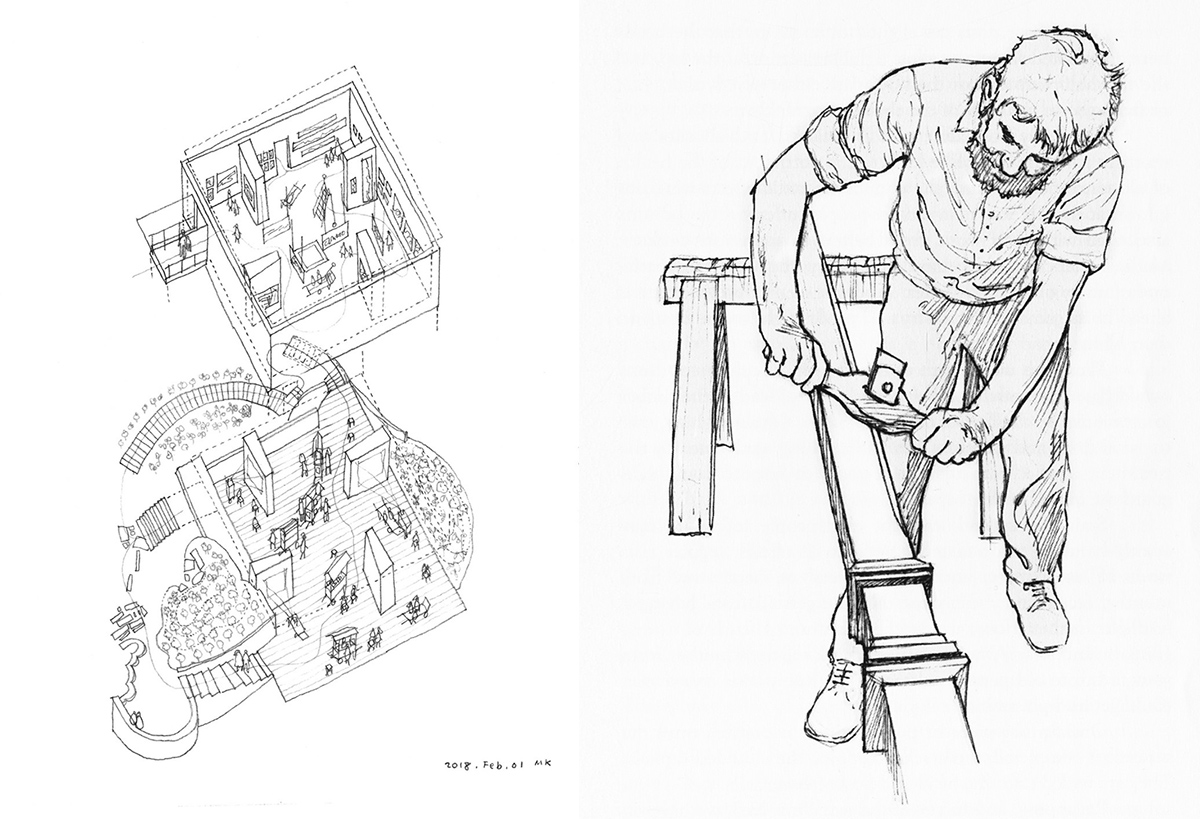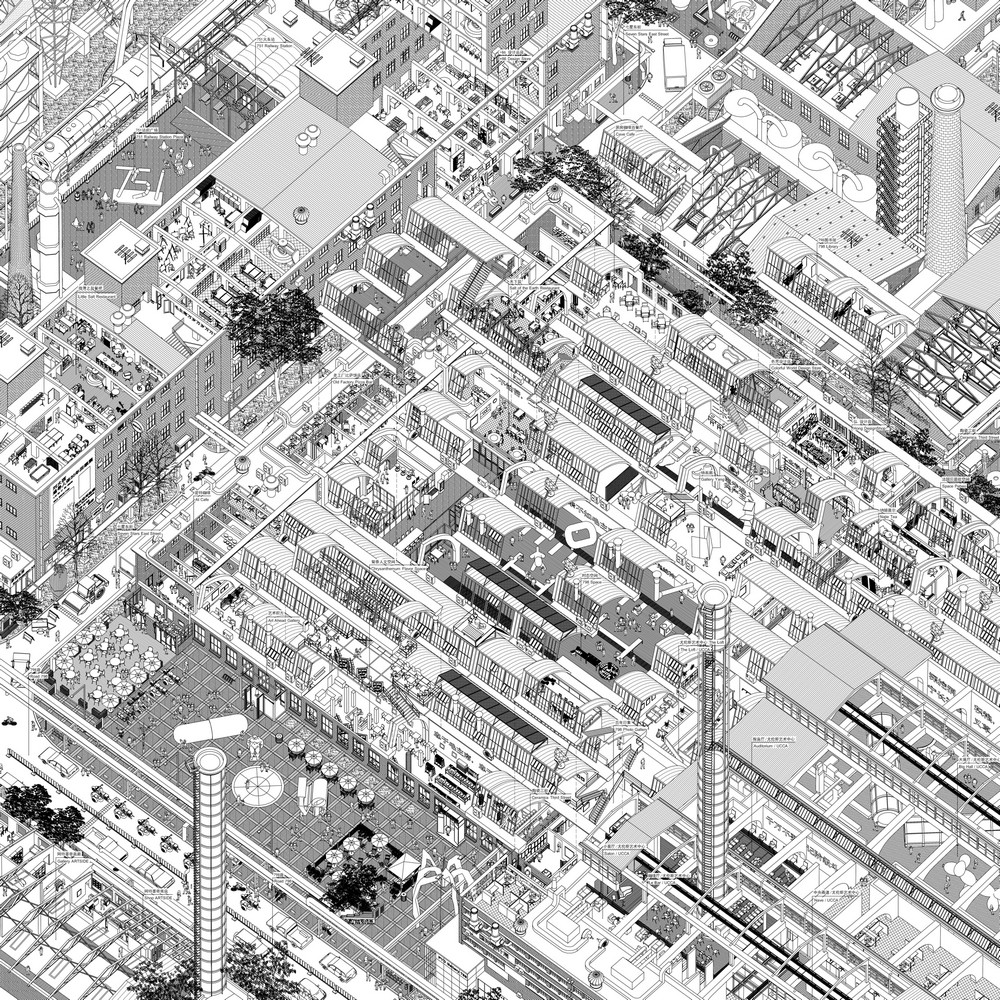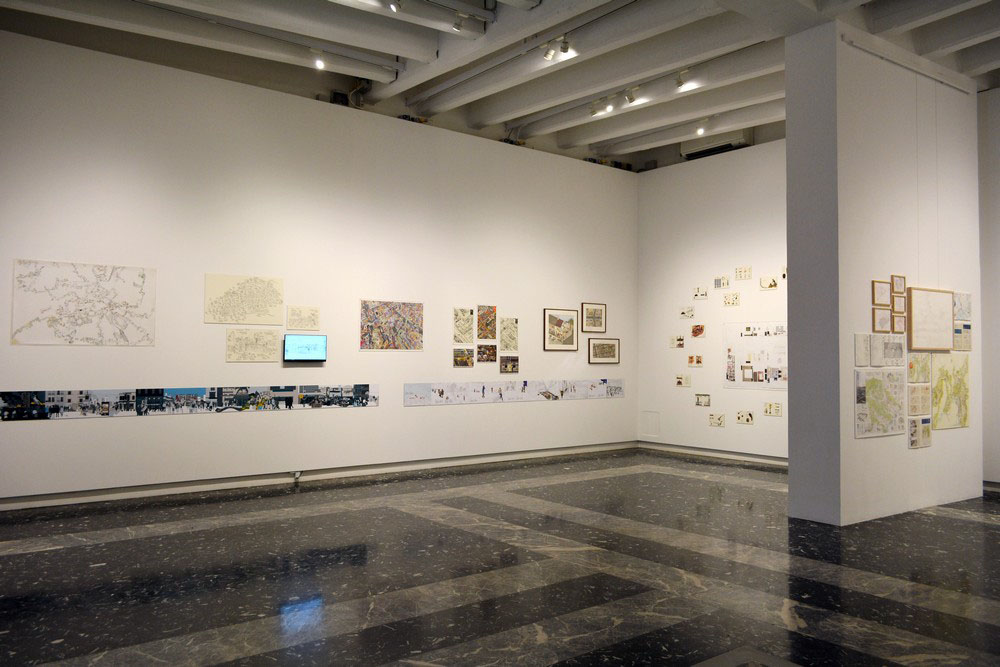ARCHITECTURE: Architectural Ethnography
 Life exceeds architecture. What does this mean for architecture? How can the myriad situations that both feed into and result from the design of a building be effectively mapped? How does one address architectural drawings, not just as simple notational systems but as instruments to document, discuss, and evaluate architecture? How can they work to explore people’s actual usages, needs, and aspirations, and moreover to give shape to individualized life forms in today’s globalized society?
Life exceeds architecture. What does this mean for architecture? How can the myriad situations that both feed into and result from the design of a building be effectively mapped? How does one address architectural drawings, not just as simple notational systems but as instruments to document, discuss, and evaluate architecture? How can they work to explore people’s actual usages, needs, and aspirations, and moreover to give shape to individualized life forms in today’s globalized society?
By Efi Michalarou
Photo: The Japan Foundation Archive
The exhibition “Architectural Ethnography” in the Japan Pavilion at the 16th Venice Architecture Biennale, showcases a collection of 42 projects from all over the world from the last 20 years, ranging from design specifications and spatial-activity charts, to maps of urban hybrids and large studies of rural farming and fishing villages following natural disasters, originating from university design studios, architectural offices, or artistic practices. They all reflect the search for a new approach in drawing among and around society. Momoyo Kaijima of Atelier Bow Wow has been developing the thinking underlying this method of observing and recording the human environment since the late 1990s, beginning from the premise that ethnography is the “Representation of a society and culture of a specific ethnic group based on fieldwork”. In 2001 the practice published “Made in Tokyo”, a guidebook to the modernity of Tokyo’s urban space that revealed, in simple line drawings, a typological analysis of the messy reality of the built environment as it responded to the spontaneous desires and activities of the city’s inhabitants. Their experiment was an influential starting point for many other projects seeking to transcend preconceptions of what constitutes architecture through a refined process of observation and reflection. As Momoyo Kaijima explains “In the 20th century, the industrialization of society raised productivity and brought us convenient life with economic growth. However, the change has made us adapt our lives into an industrial network and created the barrier between people and environmental resources. One of the main roles of the 21t Century architecture is to break the barrier and to realize higher accessibility to resources”. The goal of the exhibition is to propose “Architectural Ethnography” as a new methodology for engaging with our society. It does so by showcasing a collection of forty-two works from all over the world from the last 20 years, ranging from design specifications and spatial-activity charts, to maps of urban hybrids and large studies of rural farming and fishing villages following natural disasters, originating from university design studios, architectural offices, or artistic practices. The exhibition is grouped into four categories: “Drawing of Architecture” which collects, categorises and illustrates buildings; “Drawing for Architecture” which has a more complex relationship with the transformation of buildings, and the patterns of architecture, landscape and construction, including drawings made for consultation; “Drawing Among Architecture” which explores how people’s ways of life are shaped by different climates, topographies and cultures; and “Drawing Around Architecture” which encompasses surveys of the wider situation of architecture. In the center of the pavilion’s main room, a collection of instruments invites the visitor to scrutinize the drawings as scientific objects, as outcomes of ethnographical observation. A library ladder on wheels can be pushed up to the wall to give access to drawings situated high up near the ceiling; vertical sequences of drawings can be followed by walking up or climbing down the ladder. Unaccompanied by captions the drawings can be confronted at face value, and they are open to interpretation through personal association rather than curatorial commentary. A special magnifying wheel provides a map of the drawings with title, date and author.
Info: Commissioner: The Japan Foundation, Curators: Momoyo Kaijima, Laurent Stalder and Yu Iseki, Assistant Curators: Simona Ferrari, Tamotsu Ito, Andreas Kalpakci, Landscape Adviser: Christophe Girot, Graphic: neucitora, The Japan Pavilion, Giardini della Biennale, Castello Venice, Duration: 26/5-25/11/18, Days & Hours: Tue-Sun 10:00-18:00, www.jpf.go.jp and www.labiennale.org







